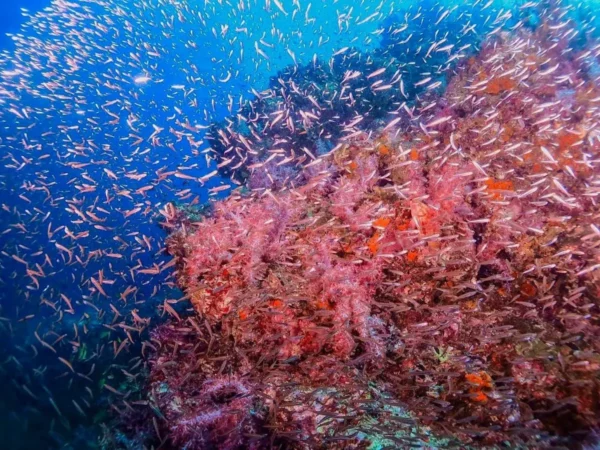Introduction
The Gulf of Thailand is a semi-enclosed sea in the western Pacific Ocean, bordered by Thailand, Cambodia, Vietnam, and Malaysia. This body of water is known for its rich marine biodiversity, economic significance, and role in regional maritime activities. It supports fisheries, tourism, and trade while facing environmental challenges due to human activities and climate change.
This article explores the geography, marine biodiversity, economic importance, and environmental issues of the Gulf of Thailand, with a brief look at how natural disasters, including tsunamis, have affected the region.
Geography and Physical Features
The Gulf of Thailand covers an area of approximately 320,000 square kilometers, making it smaller than the Andaman Sea. It is a shallow sea, with an average depth of about 45 meters and a maximum depth of around 85 meters. The gulf is bordered by:
- Thailand to the north and west
- Cambodia to the northeast
- Vietnam to the east
- Malaysia to the south
The shallow nature of the gulf, combined with its semi-enclosed status, results in warmer water temperatures ranging between 27°C to 31°C. The Chao Phraya, Mae Klong, and Bang Pakong rivers discharge into the gulf, bringing nutrients that support diverse marine ecosystems.
Marine Biodiversity
The Gulf of Thailand is home to a variety of marine species, including coral reefs, mangroves, and important fish populations. Some of the notable marine life includes:
1. Coral Reefs and Marine Ecosystems
Coral reefs in the Gulf of Thailand are found primarily along the eastern coast and around islands such as Koh Tao, Koh Samui, and Koh Chang. These reefs support an abundance of marine species and serve as breeding grounds for many fish populations.
2. Sharks in the Gulf of Thailand
Although not as diverse as the Andaman Sea, the Gulf of Thailand hosts a few shark species, including:
- Blacktip Reef Shark (Carcharhinus melanopterus): Common in coral reef areas.
- Leopard Shark (Triakis semifasciata): A bottom-dwelling species found near sandy seabeds.
- Bamboo Sharks (Hemiscylliidae family): Small, harmless sharks found in coral reef habitats.
These sharks play a crucial role in maintaining marine ecosystem balance and controlling prey populations.
3. Other Marine Species
Apart from sharks, the Gulf of Thailand is home to:
- Dugongs: Found in seagrass meadows, primarily near southern Thailand.
- Sea Turtles: Green and hawksbill turtles nest along the gulf’s coastline.
- Dolphins: Irrawaddy dolphins and Indo-Pacific humpback dolphins inhabit these waters.
- Commercial Fish Species: Including tuna, grouper, snapper, and mackerel.
Economic Importance of the Gulf of Thailand
The Gulf of Thailand serves as a major economic hub, supporting various industries:
1. Fisheries
Fishing is the backbone of many coastal communities, with the gulf providing an abundance of seafood. However, overfishing and destructive practices such as trawling have led to declines in fish stocks.
2. Tourism
The Gulf of Thailand is a major tourist destination, known for its islands and beaches. Key tourist spots include:
- Pattaya: A major beach resort city near Bangkok.
- Koh Samui: Famous for luxury resorts and nightlife.
- Koh Tao: A renowned diving and snorkeling destination.
- Koh Chang: An island with dense jungles and pristine beaches.
Tourism brings economic benefits but also pressures marine ecosystems due to pollution and coral reef degradation.
3. Shipping and Trade
The Gulf of Thailand is a key maritime route, connecting Thailand to global trade networks. Major ports such as Laem Chabang and Bangkok Port facilitate the movement of goods and contribute to the regional economy.
Natural Disasters and the Gulf of Thailand
While the Gulf of Thailand is generally protected from major oceanic disasters due to its semi-enclosed nature, it has experienced the impact of extreme weather and, to a lesser extent, tsunamis.
1. The 2004 Indian Ocean Tsunami
Unlike the Andaman Sea, which bore the brunt of the 2004 tsunami, the Gulf of Thailand was largely shielded from its direct impact. However, minor tidal disturbances were recorded in some coastal areas. The event highlighted the need for better disaster preparedness and monitoring systems in Southeast Asia.
2. Tropical Storms and Coastal Erosion
The Gulf of Thailand is frequently affected by monsoons and tropical storms, leading to coastal erosion, flooding, and habitat destruction. Climate change has exacerbated these challenges, increasing sea level rise and storm intensities.
Environmental Challenges and Conservation Efforts
Like many marine environments, the Gulf of Thailand faces significant environmental threats:
1. Overfishing and Habitat Degradation
Overfishing has led to the decline of many fish species, threatening the livelihoods of local fishermen. Efforts to implement sustainable fishing practices and establish marine protected areas (MPAs) are underway to combat this issue.
2. Coral Bleaching and Climate Change
Rising sea temperatures have caused coral bleaching events, impacting marine biodiversity. Conservation programs aim to restore damaged reefs and promote sustainable tourism practices.
3. Marine Pollution
Industrial waste, plastic pollution, and untreated sewage threaten the gulf’s water quality. Initiatives such as waste management programs and pollution control policies are being introduced to address this crisis.
Conclusion
The Gulf of Thailand is a vital marine ecosystem that supports biodiversity, economic activities, and millions of people in the region. While it is not as deep or biodiverse as the Andaman Sea, it plays an essential role in fisheries, tourism, and maritime trade. However, environmental threats such as overfishing, pollution, and climate change pose challenges to its sustainability. Conservation efforts and responsible marine management are crucial to preserving this important body of water for future generations.



